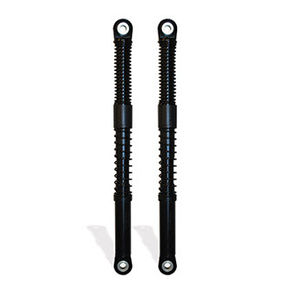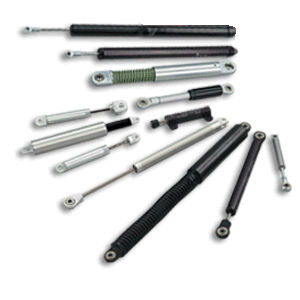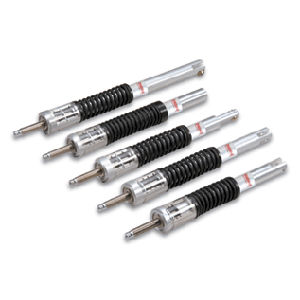
- Company
- Products
- Catalogs
- News & Trends
- Exhibitions
Anti-vibration mount for the aviation industry APU elastomer
Add to favorites
Compare this product
Characteristics
- Domain
- for the aviation industry
- Other characteristics
- elastomer
Description
APU Isolators
Product Description
Wire mesh material can be manufactured in a multitude of shapes and sizes to accommodate your specific application needs. Auxiliary Power Units (APUs) are just one example of a product that can benefit from the use of wire mesh technology. Its high damping characteristics and non-linear spring rates protect the APU from the effects of tough performance and harsh environments. APU Isolators can prevent the premature deterioration of equipment, improve performance levels and extend service life, particularly when conditions would inhibit the capabilities of a standard elastomer.
The ITT Enidine Inc. APU Isolator offers excellent heat and corrosion resistance properties for withstanding a wide range of environmental conditions, including operating temperatures up to 800 ºF. Best of all, it is a durable alternative to a standard elastomeric isolator.
APU isolator systems increasingly utilize electronic components that can be sensitive to vibration. In order to extend the service life of these LRUs, Endine can design, test and manufacture mounting brackets with integral isolation. These brackets are designed to attenuate the normal operating frequencies, while also withstanding the heavy loading introduced by high-G situations.
Specifications
- Corrosion resistance properties for withstanding a wide range of environmental conditions,
including operating temperatures of –25º F to 200º F.
- Vibration of less than 5g maximum amplification at resonance
- Basic shock of 30g, 11 msec.
- Gun firing shock of 55g, 2.5 msec.
- Ballistic shock of 65g, 2.0 msec.
Catalogs
Related Searches
- ITT Aerospace Controls actuator
- ITT Aerospace Controls aircraft actuator
- ITT Aerospace Controls electric actuator
- Linear actuator
- ITT Aerospace Controls rotary actuator
- Screw actuator
- Hydraulic actuator
- Compact actuator
- Aircraft hinge
- Hinge
- Suspension
- Pneumatic actuator
- Aircraft interior hinge
- Anti-vibration mount
- Anti-vibration mount for the aviation industry
- Dual motor actuator
*Prices are pre-tax. They exclude delivery charges and customs duties and do not include additional charges for installation or activation options. Prices are indicative only and may vary by country, with changes to the cost of raw materials and exchange rates.












